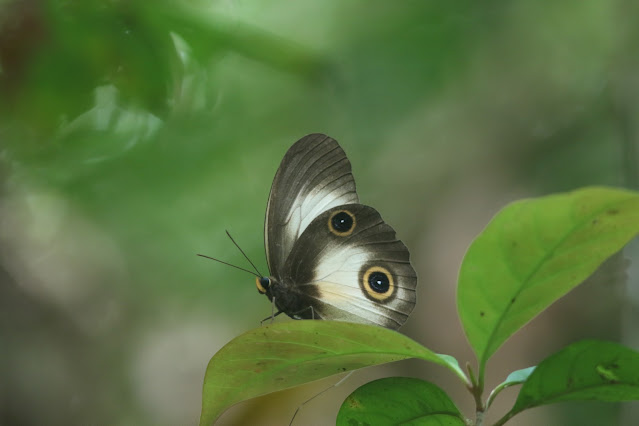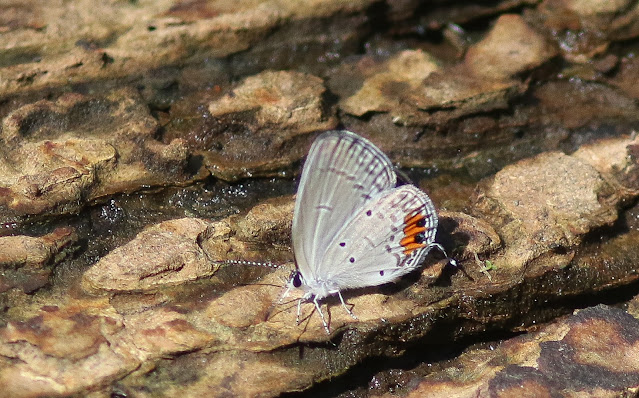One of the main highlights of the visit to Waigeo Island was the ferry crossing pelagic from Sorong. Ebird lists for the return and outgoing journey HERE and HERE. It's about a two hour journey and there was action all the way from both seabirds and cetaceans.
Wedge-tailed Shearwater (dark morph). Dark morph is more common in the Southern Pacific and pale morph commonest in North Pacific. This species is largely sedentary in the region with nearby breeding colonies.
Not experienced at all with Noddies, this looked pretty black in some lights (e.g. above) but browner in others (below). I'm leaning towards Brown Noddy as the bill looks quite heavy and it does look particularly brown below. Any comments most welcome. Howell and Zufelt suggest up to 12 different global Noddy species with 2 Brown, 4 Black, 3 Blue-gray and 3 White Noddy species. In this region the dark Noddy contenders are presumably Common Brown Noddy and Pacific Black Noddy.
Streaked Shearwater- this species mainly breeds in the Japan region and migrates south in the northern winter so presumably the few birds we saw were early winter migrants
Bulwer's Petrel- we had a lot of these- at least 15 on the return leg
First-summer Sooty Tern (it's Spring in Papua)
2nd-cycle Red-footed Booby
First-cycle Red-footed Booby- the pale iris seems to be a variable feature
Howell and Zufelt suggest 3 species of global Brown Bobbies- Brewster's (off California etc), Atlantic Brown Booby and presumably this one, Indo-Pacific Brown Booby showings it's characteristic cleaner white underwing panel and also perhaps of hint of blue on the face
Juvenile Long-tailed Skua- presumably this year's bird already quite far south. Didn't appreciate how widespread Long-tailed Skuas are but they seem to breed across the entire Arctic region and migrate south to all oceans.
Pomarine Skua and Streaked Shearwater
Wilson's Petrel- a few of these. What with Streaked Shearwaters and Skuas just arriving after breeding further North and Wedge-tailed Shearwaters resident the Wilson's Petrels were presumably just leaving the region to head to the Antarctic region to breed
Red-necked Phalaropes- some nice partial summer plumage birds in there too
Second-cycle Lesser Frigatebird
Not entirely sure what this is, we did see some presumed Long-snouted Spinner Dolphins (actually spinning) so could be one of them. There were good numbers of cetaceans from the ferry, particularly on the return leg with probably 20+ Short-finned Pilot Whales and 50+ Dolphin sp (Bottlenose and Spinners). Update- this is a Bottlenose Dolphin but there could be two species in this region including Indo-Pacific Bottlenose Dolphin (thanks to Sean Minns). 151224 update- a further update on this, the final verdict was that these were Pantropical Spotted Dolphins
HEREShort-finned Pilot Whales
Look like Bottlenose Dolphins (above and below)
Sources:
Flood and Fisher 2020, North Atlantic Seabirds, Shearwaters.
Howell and Zufelt, 2019 Oceanic Birds of the World, A Photo Guide























































